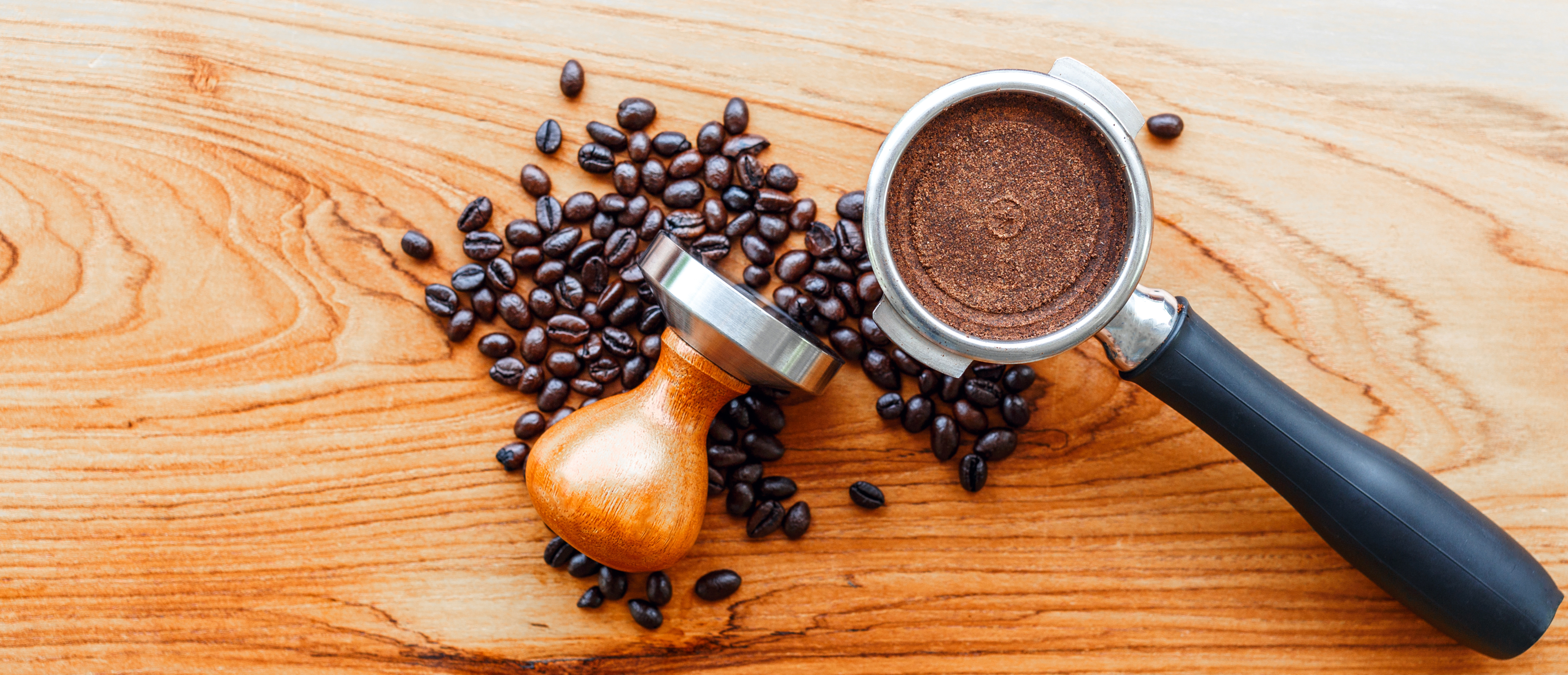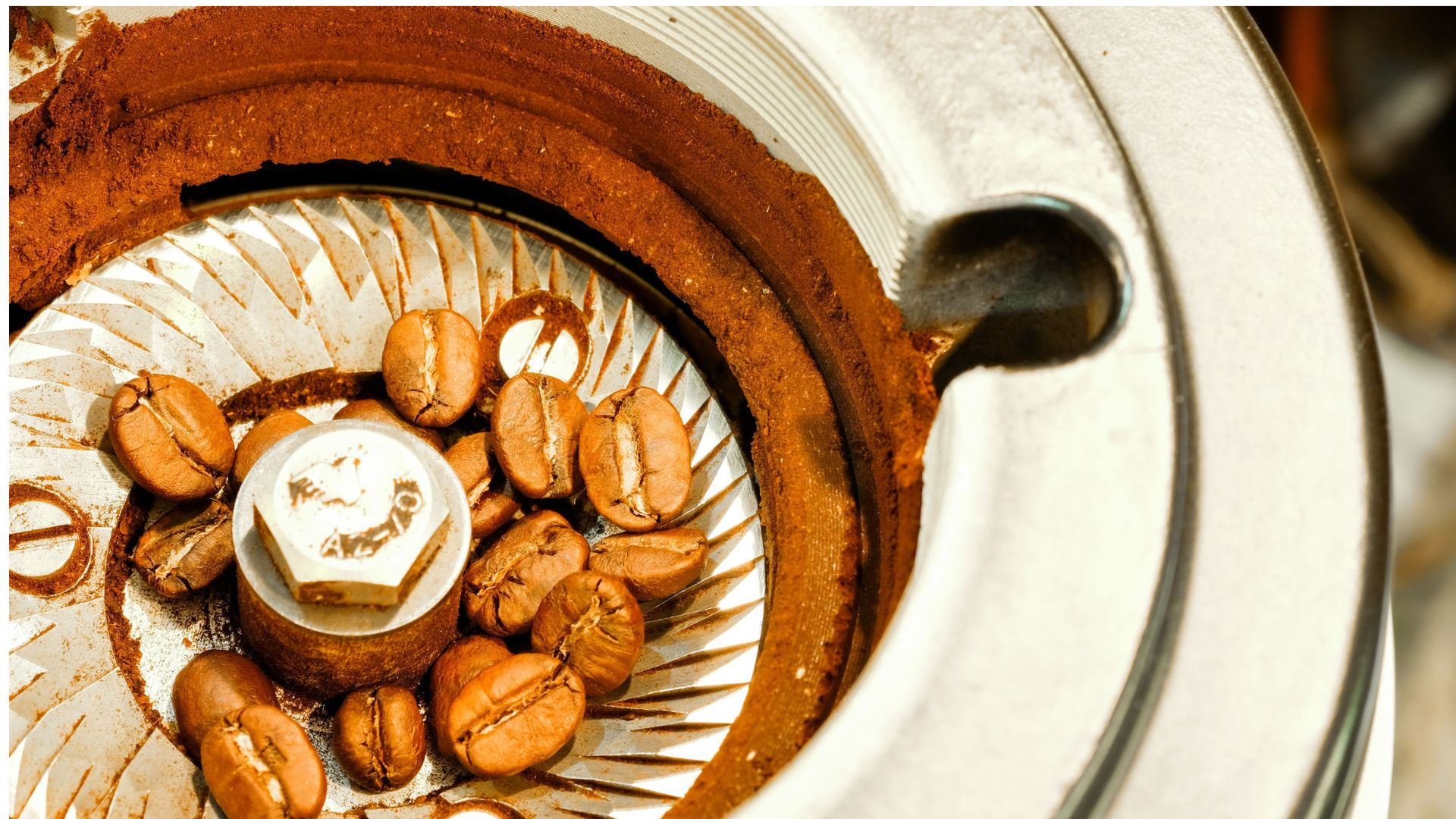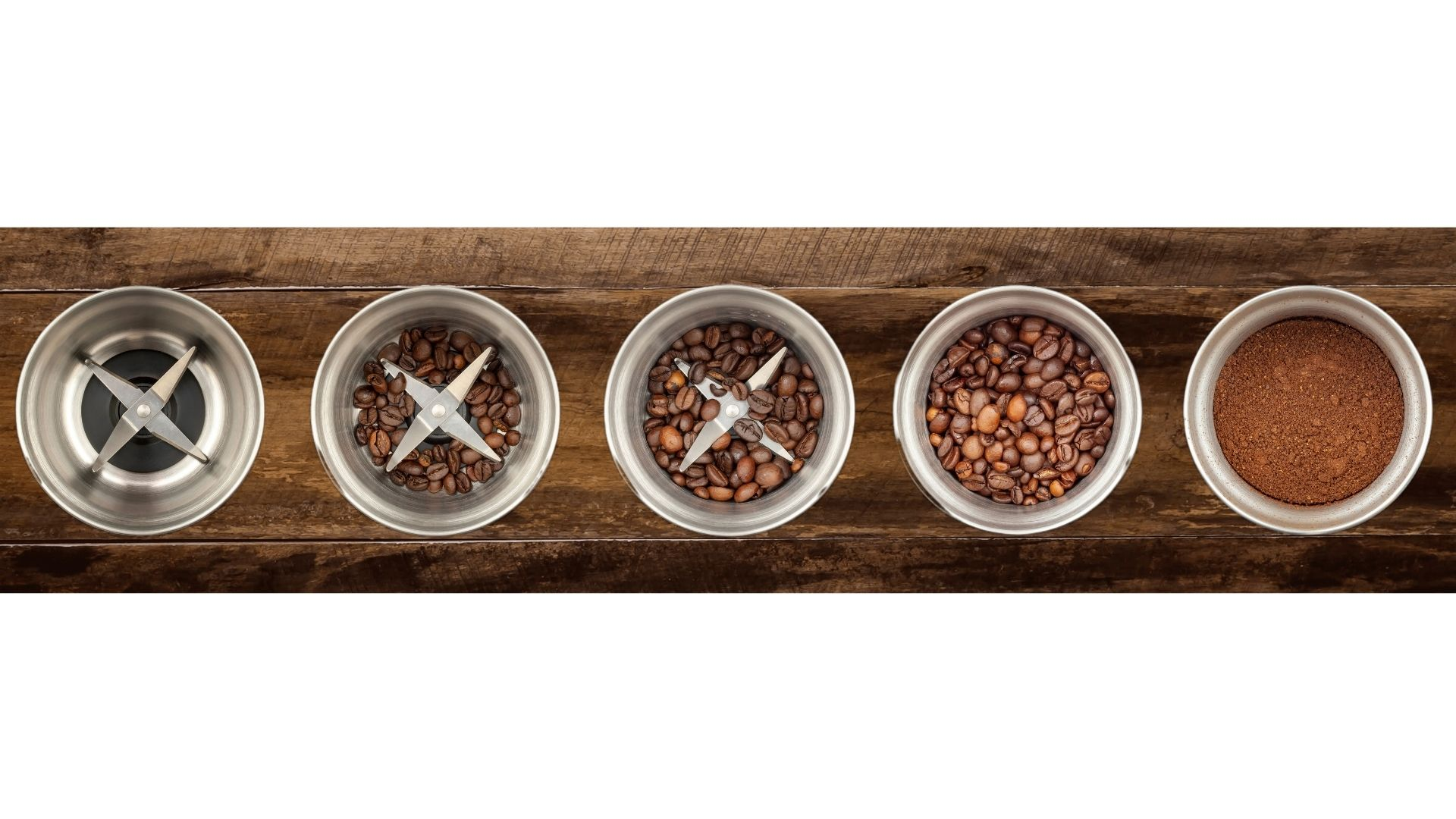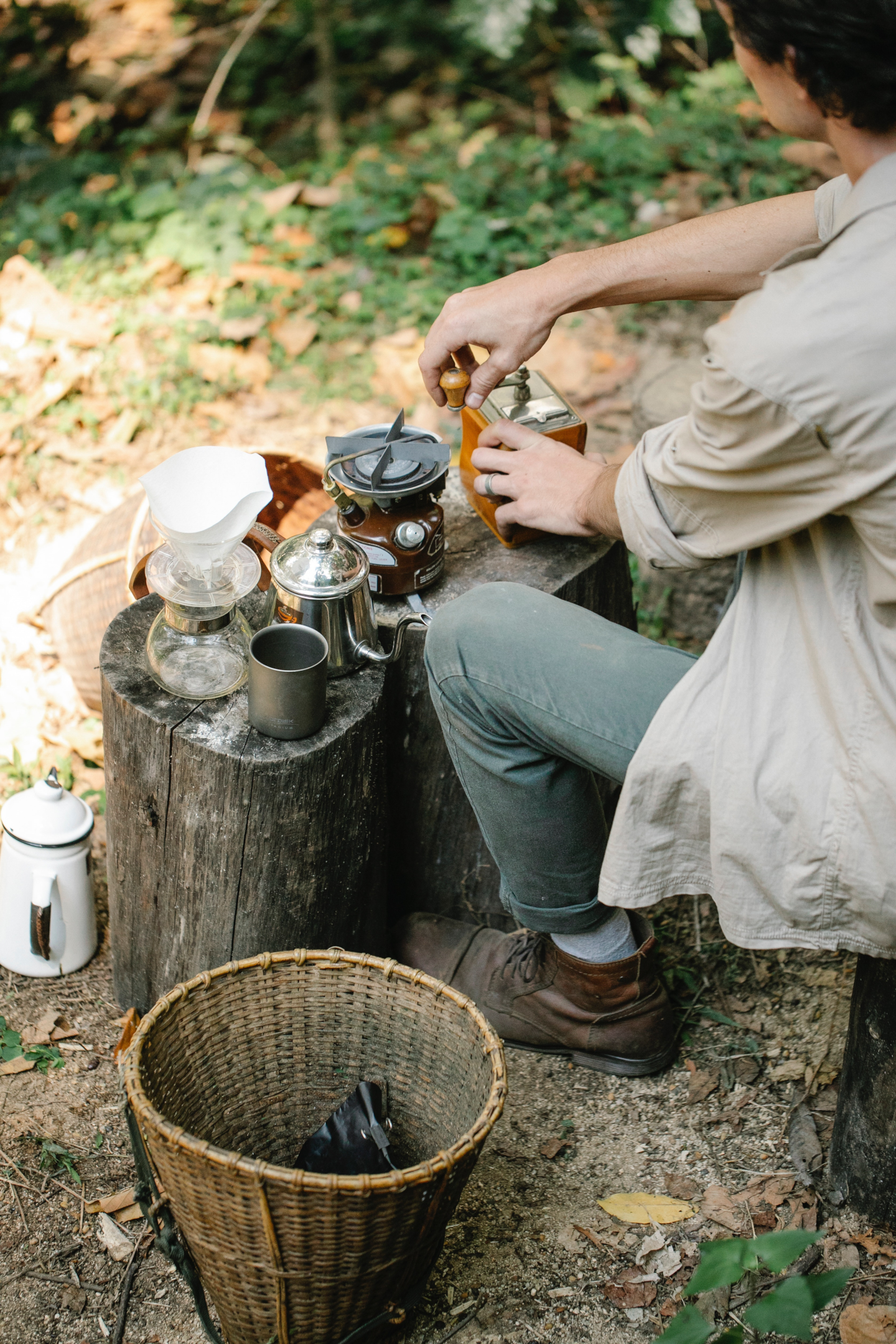Craving coffee? The quality of coffee grounds can make or break the perfect cup, so the type of grinder you use can make all the difference in the flavor and aromatics of your coffee.

The burr grinder and the blade grinder essentially do the same thing, but they have different mechanisms and produce varied results. In this article, we will explore the differences between the two, so you can determine which type of grinder is best for you.
Why Grind Your Coffee
Grinding coffee beans breaks them into smaller particles, so hot water can more easily dissolve the flavor compounds and release the essential oils that give coffee its distinct taste and aroma.
Grinding ensures optimal flavor extraction. By adjusting the grind size, you can fine-tune the taste and strength of the coffee to suit your preferences.
It also allows for greater control over the way you brew coffee. Different brewing methods require different grind sizes to optimize flavor extraction. For example, espresso machines need a fine grind for a quick extraction under high pressure, while a French press requires a coarser grind for a longer steeping time.

Moreover, grinding your beans right before brewing helps maintain their freshness, as the volatile compounds responsible for flavor and aroma are preserved within the structure of the freshly ground beans.
Lastly, grinding your beans lets you customize your coffee experience. You can experiment with different taste profiles, strengths, and mouthfeels by adjusting the grind size, brewing method, and brewing time to create your ideal cup.
Burr Grinder vs. Blade Grinder: The Grinding Process
Burr Coffee Grinder
Burr coffee grinders — burr mills — use two revolving abrasive surfaces, or two donut-shaped burrs, to grind coffee. First, the beans are loaded onto the hopper, usually located at the top of the grinder and made of glass, plastic, or stainless steel.

Activating the grinder feeds the coffee beans into burrs made of either ceramic or stainless steel. One burr remains stationary while the other rotates. The burrs cut, ground, and crush the beans into smaller particles. The grind adjustment helps determine how coarse or fine the grounds will be. The closer the burrs are to each other, the finer the grind.
Blade Coffee Grinder
Also known as the propeller or spice grinders, blade grinders chop coffee beans into smaller particles using spinning blades.
The longer the blade grinder operates, the finer the grounds are. However, the grind size isn't easily adjustable. If you want your coffee grounds to be consistent, pulse the grinder effectively.

As the blades spin, the beans are continuously tossed and circulated within the grinding chamber, ensuring that most beans come into contact with the edges. However, the process leads to uneven distribution, often resulting in poorly ground beans — which is why coffee snobs consider blade grinders bad.
Why Connoisseurs Love Burr Grinders
Unlike their blade counterparts, burr coffee grinders produce even coffee grounds. Here are other reasons burr coffee grinders reign supreme among coffee enthusiasts:
Less Heat
The blade grinder generates more heat because the blades move at high speeds, causing the beans to overheat — making the coffee bitter. Burr grinders, on the other hand, produce less heat due to their slower pace and more controlled grinding action.
Greater Control and Precision
The burr grinder settings allow you to adjust the size of your grounds based on your brewing method. The more control you have, the more flavor you will get for your coffee. Finding the right grind size and adjusting the burrs for your preferred brewing method can be complicated, but the resulting quality of the coffee makes using the burr grinder worth all the effort.

Built to Last
The blade grinder tends to become dull over time. On the other hand, the burr mill is less prone to wear and tear because its donut-shaped burrs create less heat and friction than spinning blades. With proper maintenance, a burr grinder can last many years. Though expensive, the burr grinder is the investment that keeps giving — consistent grinds, smooth coffee, and an overall satisfactory coffee routine.
Conical vs. Flat Burr Grinders: Which Burr is Better?
There are two main types of burr grinders, distinguished by the shape and orientation of their burrs.

Flat Burr Grinders
The flat burr grinder uses two flat, horizontally-aligned burrs that crush coffee beans into tiny pieces. One burr rotates while the other stays put. Fed into the center of the burrs, the beans are ground outward in a centrifugal motion, passing through the outer serrated burr. The flat burrs' sharp teeth break the beans into even-sized particles, ensuring a consistent grind.
Despite being noisier and producing more heat than conical burr grinders, flat burr grinders are more precise. No wonder many consider them the gold standard in making finely-ground coffee.
Conical Burr Grinders
The conical burr grinder features two burrs — one inside the other — with the beans getting ground between them. The cone-shaped center burr rotates as the outer burr stays put.
Grinders with conical burrs are quieter, produce less heat, and have a wider range of grind sizes than flat burr grinders — you can dial in the perfect grind for your preferred brewing method, from French press to espresso and everything in between. Conical burrs are also easier to clean and maintain since they are less prone to trapping coffee grounds.
Why Blade Grinders are the Best for Joe Schmoe and Plain Jane

Burr grinders are generally considered to be superior for grinding coffee, but blade coffee grinders are still popular among casual coffee drinkers for the following reasons:
Affordability
Blade grinders are ideal for budget-conscious coffee lovers. They have lower manufacturing costs due to their simpler design and fewer components. The lower price point allows people to enjoy freshly ground coffee without the high cost. However, it compromises grind consistency and durability, and the blades may need frequent replacement.
Portability and Ease of Use
Small and light, blade grinders are more portable and easier to store — an appealing feature for those with limited kitchen space or those who travel frequently. It's also generally simple to operate, with a single on/off button. The blade assembly can be quickly removed and wiped clean, making cleaning and maintenance hassle-free.
Versatility
While burr grinders are specifically designed for coffee and may not be as effective at grinding other substances, blade grinders offer increased versatility — they can also be used for spices and nuts, which is why they are also called spice grinders.
Speed and Quiet
Blade grinders grind coffee beans more quickly than burr grinders, a benefit for busy people. Moreover, they use a simple high-speed motor to spin the blades and chop the beans, so they don't create as much noise as the more complex mechanics of the burr coffee grinder.
Familiarity and Habit
Many coffee drinkers have used blade coffee grinders for years and are familiar with their operation and results. This familiarity may lead to a preference for blade grinders even when burr grinders offer superior performance.
Blade Grinder Hacks To Make The Perfect Cup Of Coffee

Sure, blade coffee grinders are fast and straightforward, but the rapid blade spinning won't give you a consistent grind. That's a problem because different-sized grounds brew at different speeds, so you end up with some parts that are too strong and some that are too bitter — like tasting two different flavors in one cup.
But take heart; you can still get a fresh and delicious cup of coffee that's still better than the pre-ground variety with these hacks:
-
Use the right amount of coffee. Otherwise, your grinder can overheat and produce differently-sized grounds.
-
Grind in short bursts. The blades create heat and friction that can ruin your coffee, so pulse the grinder by turning it on for a few seconds, then turning it off shortly after to cool down.
-
Shake it! Shaking prevents clumping and helps distribute the coffee grounds uniformly within the grinding chamber for a more even grind on the next burst.
-
Use a sieve after grinding.Sifting separates the fines from the boulders, which you can crush down to size. It also produces uniform coffee grounds, more or less, so you can get the (almost) perfect grind every time.
-
Do the paper towel trick. Spread your coffee grounds onto a paper towel and rub gently to remove the super fine pieces that can ruin the coffee taste. It won't give you the most uniform grind, but you'll still get a great cup of coffee.
-
Keep your grinder clean.Coffee oils and grounds can clog the grinder up, affecting the flavor. Use a small brush to remove trapped grounds and regularly wipe it down with a dry cloth.
Choosing the Best Coffee Grinder
The perfect cup of coffee starts with the ideal grind. Here are some points to consider when choosing the grinder that's right for you:
-
Consistency- If consistency is a top priority, get a burr grinder. Opt for the blade grinder if you want fresh coffee grounds fully customized to your taste.
-
Convenience -Blade grinders offer more convenience but less consistency. If you want both, get an electric burr grinder with a moving grinder wheel that crushes the beans automatically with the push of a button. Conversely, manual burr grinders are a great option if you want more control and don't mind a bit of manual labor.
-
Price point- On a tight budget? A blade grinder might be a better option. If you're a serious coffee lover and want the best coffee possible, splurge on a burr grinder.
Ultimately, the best coffee grinder depends on your personal preferences and needs. Whether you opt for a manual burr grinder, a blade grinder, or an electric burr grinder, be sure to choose a high-quality coffee grinder that meets your specific needs. With the right grinder, you can make fresh and delicious coffee whenever you want.





Hugh Powell
July 08, 2024
Burr grinders in my opinion are the way to go regarding the precise grind required. Who ever believes that frozen beans direct into an electric blade gives great coffee is really missing out